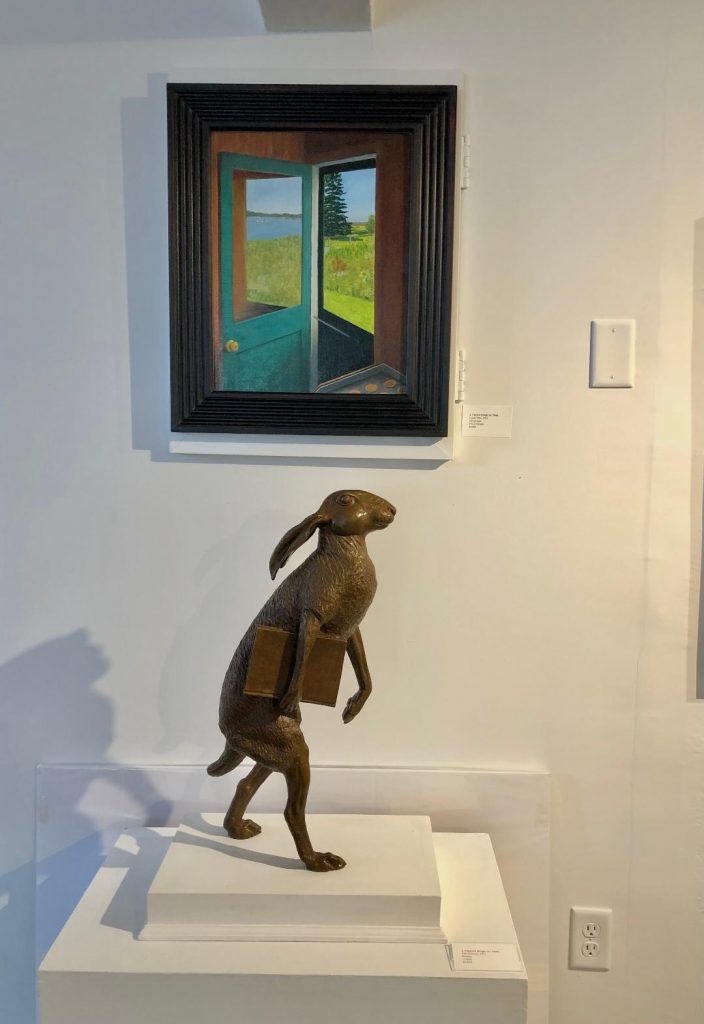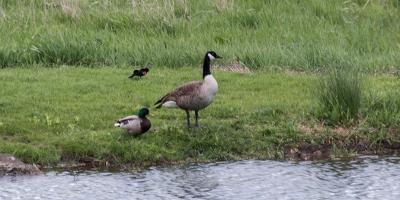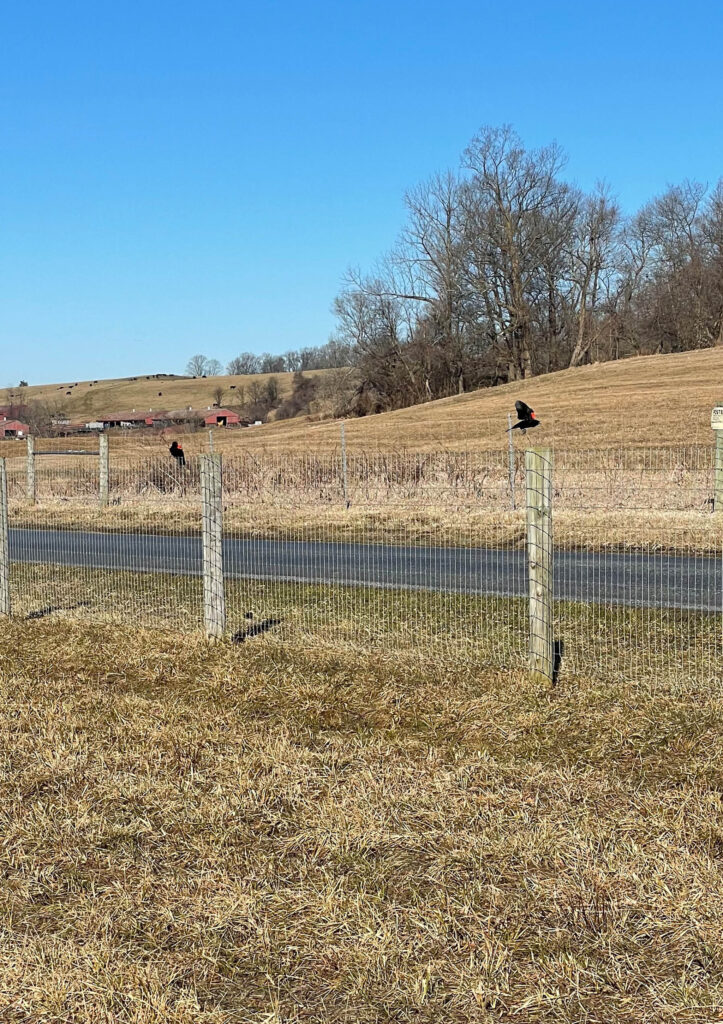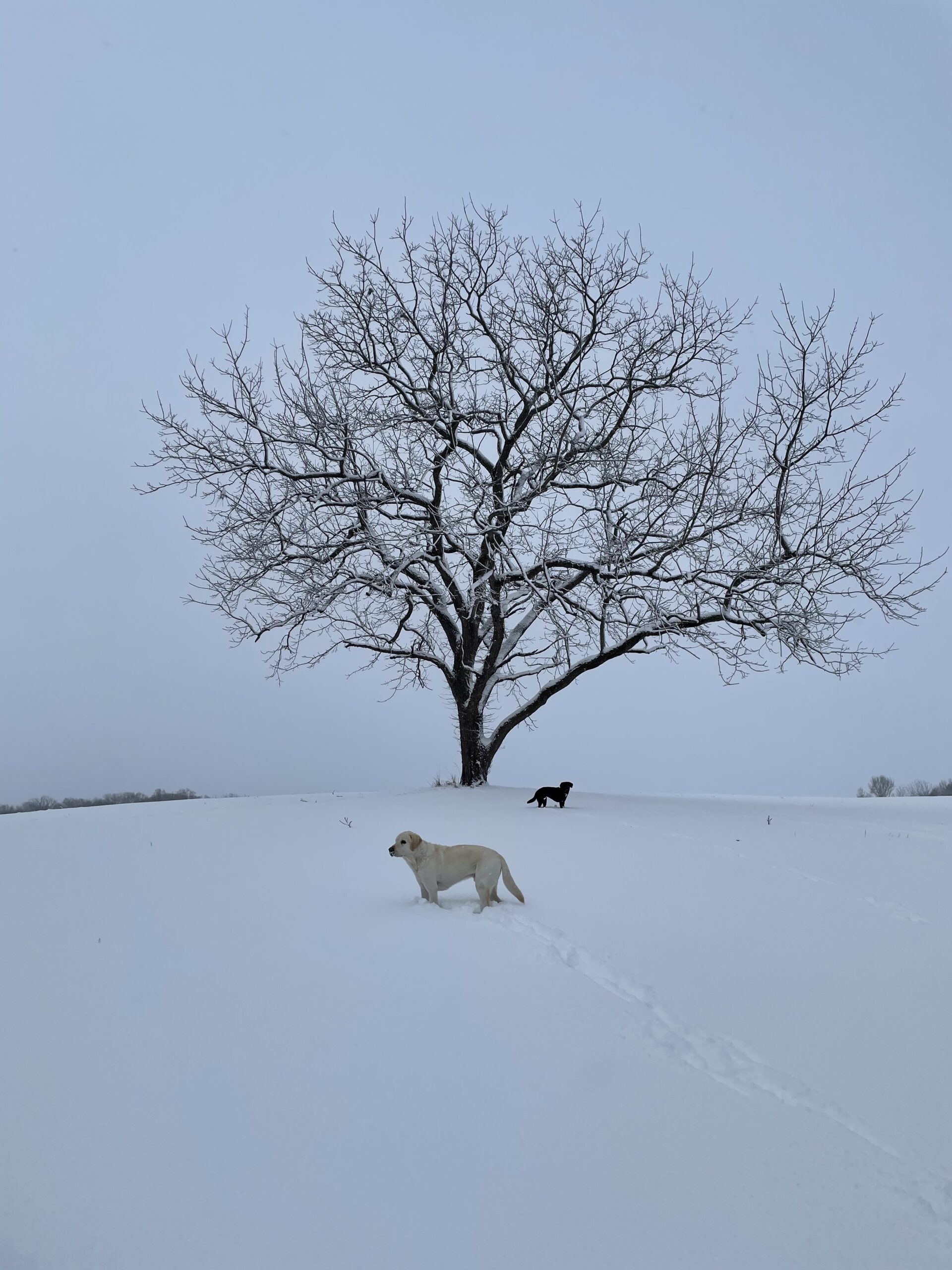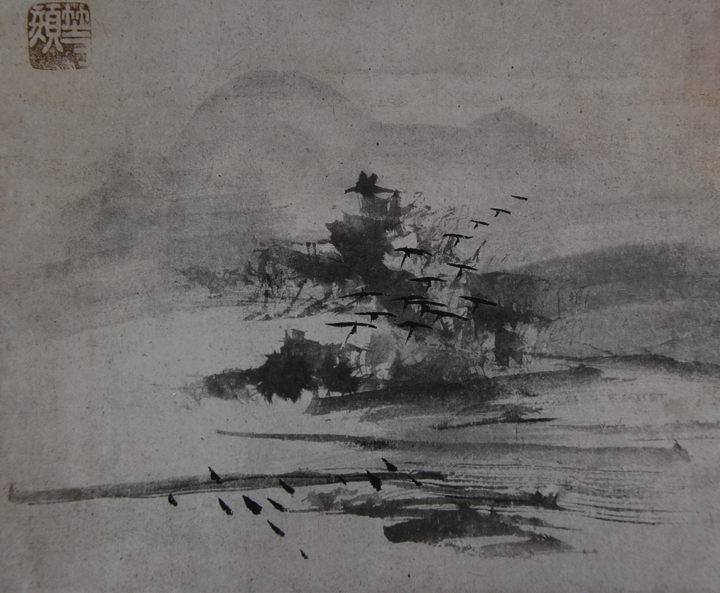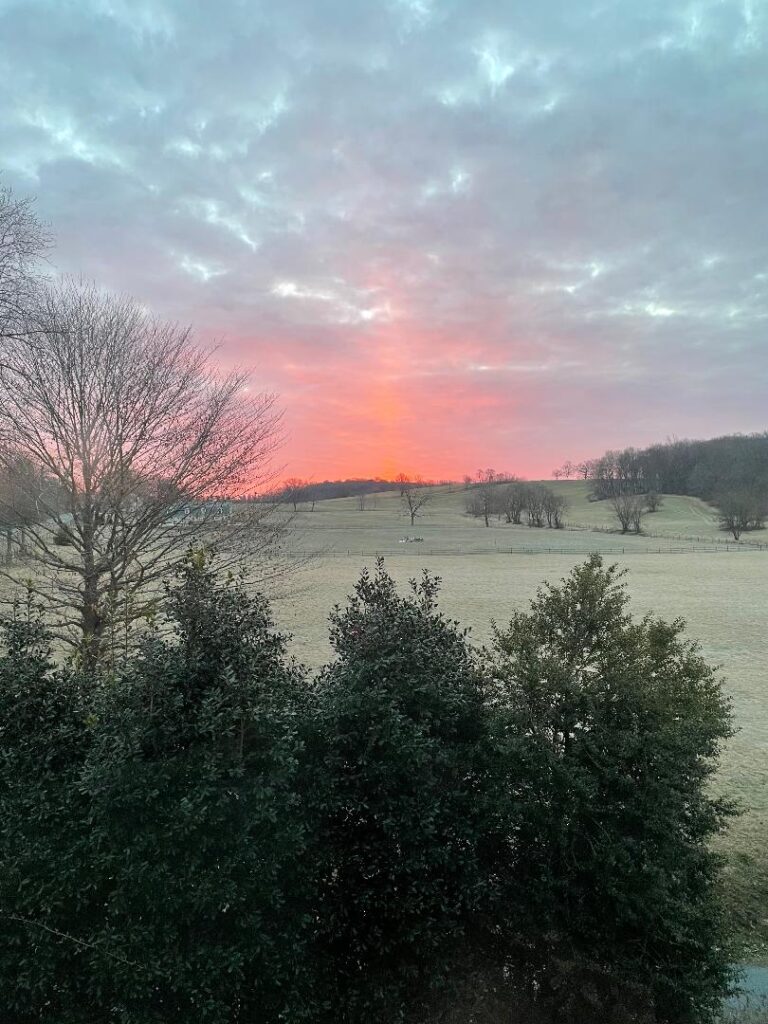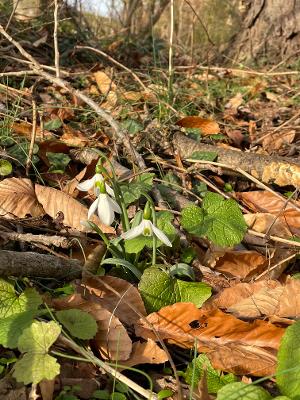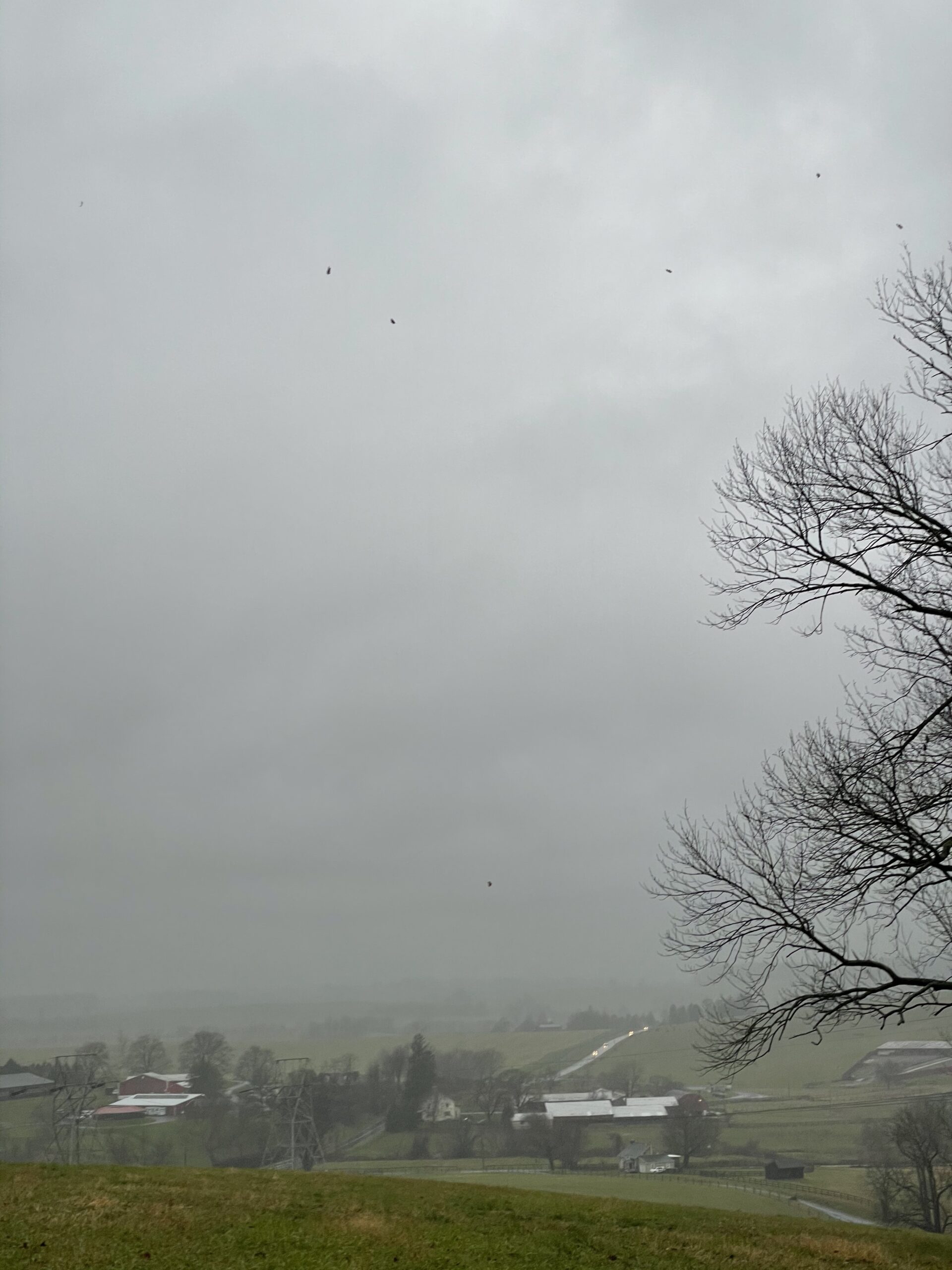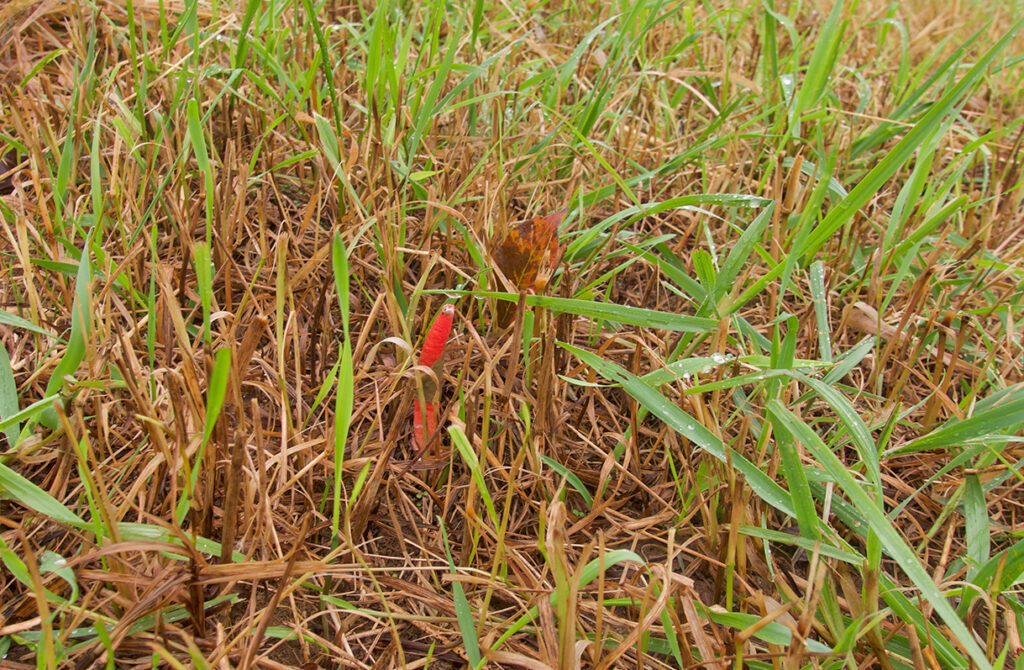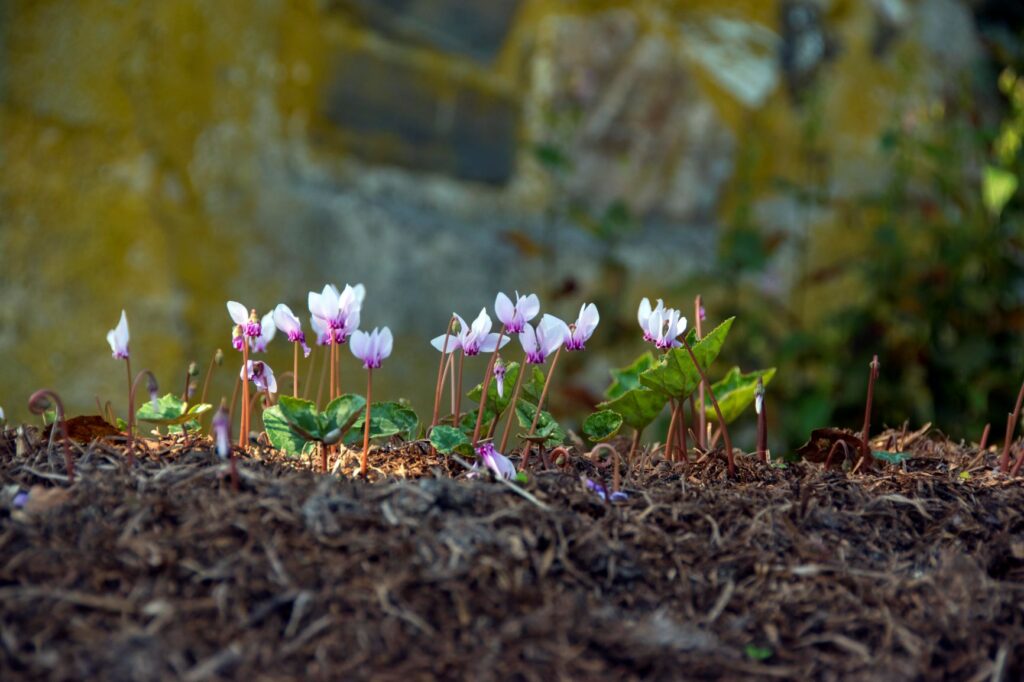
Sometimes, Oak Spring’s past and present merge in surprising and wonderful ways. That was the case earlier this fall, when artist J. Clayton Bright – a Pennsylvania-based painter and sculptor who has created several works for OSGF founder Bunny Mellon over the years – returned to Oak Spring to take our short paper making workshop.
Over the course of his decades-long career, Bright’s sculptures and paintings have been represented in several museum collections, and are also found in private collections around the world. They are noted for capturing the essence of the subject, whether it be a slightly overfed pet beagle or a fascinated toddler holding her hand under a glittering stream of bronze water.
The Oak Spring Garden Library houses two of Bright’s sculptures, which are among our library staff’s favorite pieces. He was kind enough to revisit them during his stay at the foundation, as well as chat with us about his art and his experience working with Mrs. Mellon.
Bright first became acquainted with the OSGF founder decades earlier, when she called him “out of the blue” about commissioning a bronze fox and hound sculpture for the courtyard garden she designed at her alma mater, Foxcroft School. The garden was created in memory of her late friend and classmate, Kitty Wickes Poole.
“She said, ‘I’d like a sitting fox and a sitting hound,’” recalled Bright, who had sold some bronzes to Paul Mellon previously. “I sort of thought about that, and I asked if I could change that a little bit to a fox jumping off the wall and a hound coming behind, following the fox, because in my work I try to avoid the cliche. I try to get the spirit, the personality of the subject, be it a person or an animal.”
Mrs. Mellon was “really appreciative” of the resulting pieces. As she and Bright continued to talk, she learned that he kept beagles for hunting, a breed of which she was especially fond.
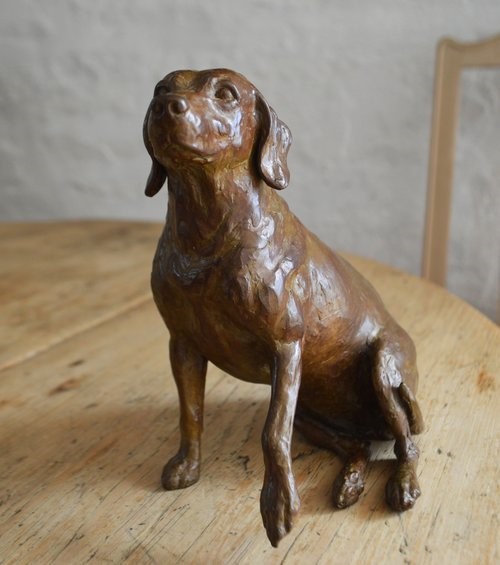
“I had a beagle that wasn’t hunting for me, but it was a really nice personality, so I called her up and asked her if she’d like Hawthorne,” explained Bright. “She wasn’t too keen on the name Hawthorne, but I’m pleased to see she came around to the name!”
Hawthorne (who was female) was one of the last dogs that Mrs. Mellon would own during her life, and is buried on the Oak Spring property. In the 1990s, Mrs. Mellon contacted Bright again to commission a small mantelpiece sculpture of her beagle. He spent ten days at Oak Spring to complete the work, where he was able to watch Hawthorne in her new home.
“Usually, it starts with a vision in my mind, and in doing the sculpture, I would do a clay model first,” said Bright, who always observes his subjects from life in order to get to know their personality, movement and mannerisms.
Creating a bronze sculpture – even one as small as Hawthorne’s statue – is a multiple-step process. After forming the clay model, Bright makes a rubber mold which is used to make a wax casting (which is “hollow inside, like a chocolate Easter bunny,”) and dips it in a vat of porcelain. One fired, the porcelain mold – one of the only materials that can withstand the high heat of molten bronze – is used to create the final product.
It is this “physical work” of sculpting that appealed to Bright, who first began creating bronzes in the 1970s. The animal lover’s first piece? A Jersey cow.
“I thought, ‘I’d never seen a cow sculpture, always a bull,’” he said. “I had a friend who was a sculptor, and I liked Eric’s work, but something told me that he wouldn’t create what I already had in my mind. So I went to Eric and asked him how to do a sculpture, and he gave me an afternoon’s lesson.”
That first bronze was one of many that depicted the animals and humans that Bright has known during his life. “Preacher” – a sparrow hawk sculpture originally purchased by Mrs. Mellon for the banister in the new wing of the Oak Spring Garden Library – is another such piece. The model was an injured bird given to Bright by a friend, which he rehabilitated.
“I was doing a sculpture of him, and a mouse ran across the floor. The bird was sitting on his perch, and just like that was off the perch and after the mouse,” he recalled. “The bird just missed the mouse, which hid into a little pile of junk. But not only did it give me the idea to add the mouse (to the sculpture), but it also said that the bird still had the ability to hunt for itself, so I could reintroduce it to the wild.”

The purchase of the hawk sculpture, said Bright, was also an example of Mrs. Mellon’s flexibility when it came to her designs and vision. She had originally intended for it to sit on the bannister of the staircase in the new wing of the Oak Spring Garden Library, but after seeing the sculpture in person, agreed with Bright that it wouldn’t be in harmony with the upper floor’s formal environment.
“She could say, ‘this isn’t really going to fit,’” he said. Mrs. Mellon – while very involved in her designs – had also shown her “capacity to listen” to the artists she worked with during the Foxcroft garden project, he recalled.
“And to me, that’s flattering, because it means she considered this an individual piece and knew that wasn’t the place to put it,” said Bright. “So she could definitely change (her ideas), and she definitely had her own eye and her own vision of where she was going.”
Although he is a veteran artist and art teacher himself, Bright believes in continuing to learn new things – “you never known when something different will come in useful” – which is how he ended up back at Oak Spring so many years later to take our paper making course with instructor Alyssa Sacora. He is not the first person in his family to engage with our programs for artists: his daughter, writer Phoebe McIlwain Bright, was one of the six nature and environmental writers featured in our Her Words on the World digital series earlier this year.
Bright hopes to use the paper he made for drawing, he said. During the course, he also enjoyed talking and exchanging ideas with Oak Spring’s current artists in residence, he said, including bookbinder Brien Biedler (and the feeling was mutual!)
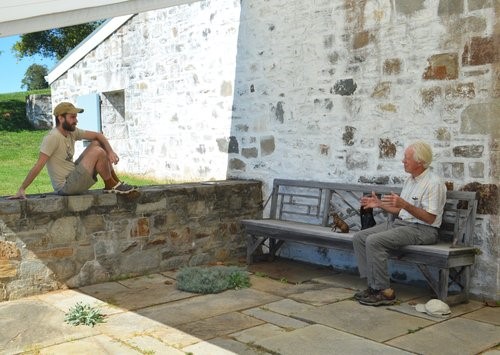
Bright chats with artist in residence Brien Biedler outside the Oak Spring Garden Library.
“I’ve always loved books, and Brien, his bindings just make me melt,” continued Bright. “They are so wonderful, they’re not only tactile, but they’re visually very compelling.”
Bright “absolutely” believes Mrs. Mellon would be glad to see her foundation granting residencies and fellowships to emerging artists like Biedler today.
“Between her and Paul, I wouldn’t even be able to guess how many artists they’ve supported,” he said.
If you’d like to see Bright’s work in person and live in the mid-Atlantic area, his sculptures will be on display at Ladew Topiary Gardens in Harford County, Maryland in until the end of October. As for what the artist hopes people learn or take away from his work? “Nothing fancy,” he said.
“In all my pieces, there’s something that I’m trying to capture,” he said, turning over the sculpture of Hawthorne in his hands. “I think of myself as a visual communicator, an author would use words to create an atmosphere and lead you the reader to a certain place, and I want you to visually be able to do that – I just want you to look at it, and walk away refreshed.”

